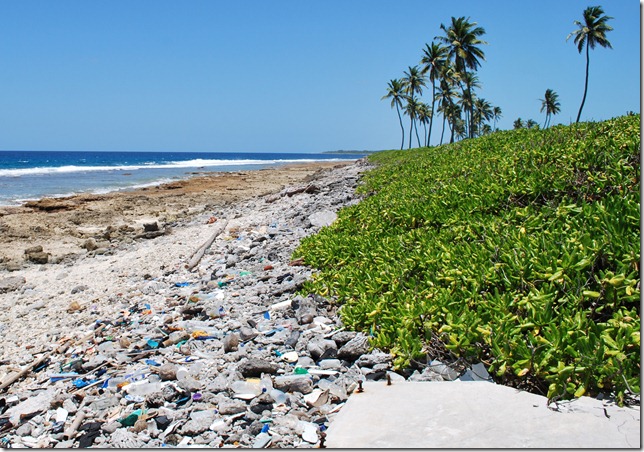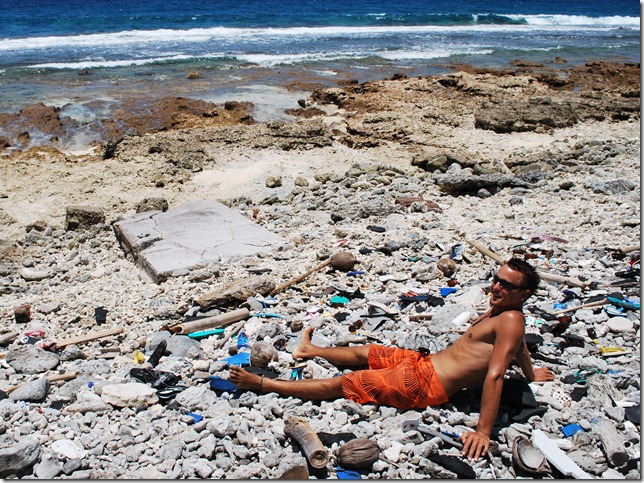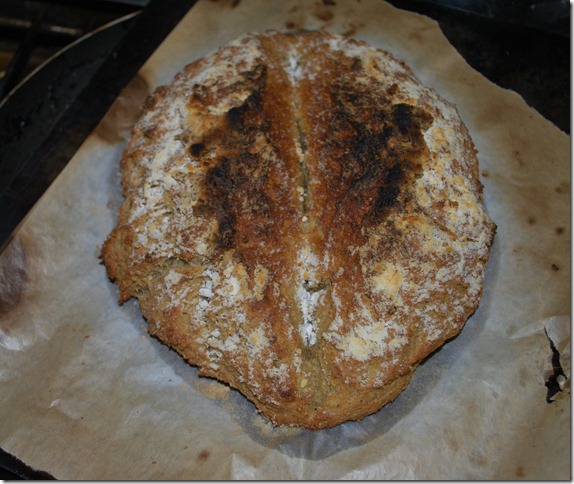Lat: 12 57.259′ S
Lon: 82 17.001′ E
One of the ways to break up long passages is to make milestones of the various intermediate events. We enjoyed two today; we now have less than 2000 miles to Cape d’Ambre and we just entered a new timezone (GMT +5). We’ve been making good time for us, averaging about 5.8 knots so far. Lauren baked an excellent loaf of wheat bread, the best looking loaf yet, and promised to bake a loaf every 1000 miles, which should work out to once a week if we can keep our speed up.
Alll is well aboard and the days seem to fly by. Lauren is working her way through the 3-foot wahoo we caught and we’ve had enough power from the wind generators that we’re able to run the freezer to preserve it. The daily radio chats with other boats are really nice and yesterday we listened to a fair amount of news and entertainment from the BBC via Singapore. The used ICOM SSB has definitely been worth the cost and installation effort. I’ve also been happy that my homemade antenna, grounding system, and DC block have us sending out a booming signal to boats 3000 miles away. This morning was the first time that atmospheric propagation conditions didn’t allow us to make contact.
The Southern Indian Ocean has a reputation for being rougher than the South Pacific or South Atlantic, and so far it’s matched its reputation. The trades seem to be a little more boisterous, but the biggest factor is the sea state. Large waves or swells from two or more directions seem to be the norm and overcast, squally days also seem to be common. Usually squalls pass by with a bit of wind or rain, but don’t impact the sea state too much since they’re relatively short-lived. On this passage, however, the seas seem to instantly get a meter higher when we near a squall, although the rain has almost always been light. I’ve also been surprised by how many times the sea state seems to be settling into a typical pattern of moderately-sized waves from the current wind direction (generally SE) only to have the boat rocked by large cross-swells from the south 10 minutes later. Being on a heavy catamaran does seem to make things easier. We’re much drier and the motion isn’t nearly as bad. The monohulls we’ve been in radio contact with have reported things like cockpits full of water from swamping waves, decks frequently awash, bruised bodies from being thrown in unexpected directions below deck, a boat half covered in flour after making a loaf of bread, and a salon table being damaged beyond repair primarily from the force of the crew being repeatedly tossed against it when trying to maneuver below. At the end of several weeks of this type of treatment, you get to try to round what sailors have traditionally termed the Cape of Storms. It’s no wonder the Suez route gained such popularity with cruisers until the recent Somali pirate situation. Luckily we get a little better angle to the waves since we’re sailing to the northern tip of Madagascar and our boat in general handles a blow pretty well as long as the wind isn’t forward of the beam. So far, we’ve made the first 800+ miles on just the jib. We haven’t adjusted it in 2 or 3 days, so we really can’t complain about tough sailing.
Another difference between the South Pacific and Southern Indian Ocean has been the amount of plastic trash. There was little-to-none in the Pacific and it’s been pretty bad here. Between Bali and Christmas Island you couldn’t walk out on deck and look around without seeing several pieces of trash floating by. The winds and currents push it westward, and there’s a beach on the east side of Christmas Island with so much trash that there are garbage bags at the parking area so that everyone who visits the beach can pick up a bag of trash and bring it back to a bin on their way out. Based on the current patterns, the nature of the trash, and general impressions during our visit to Bali, it seems like the source for most of the trash we’ve seen is Asia. The beach on the east side of Direction Island at Cocos is in a similar state, and as a lot of the beach rubbish throughout the world is flip-flops (jandals in NZ and thongs in Oz), I was hoping to replace my second pair of flip-flips and do a bit of beach cleaning at the same time. Unfortunately, there weren’t many in my size and most needed more repair than the ones I’m wearing, so I had to leave Cocos without recycled footwear.
 Washed-up trash on the beach at Cocos
Washed-up trash on the beach at Cocos
 Fellow flip-flop forager Johnny taking a break from the effort
Fellow flip-flop forager Johnny taking a break from the effort
We’ve continued to do a bit of reading about Madagascar using saved websites, cruising guides, etc. It sounds like an interesting and extremely poor place. Theft of dinghies and outboards is a problem that will be new for us as well as the occasional boat burglary. The people are so poor that boats sailing through last year reported that even empty glass and plastic jars are valuable trading items that can earn a seafood dinner. I’m not sure what they’re used for, but it could be related to the local rum being sold for about $1/liter and being dispensed into whatever container you bring to the store. We stocked up with some cheap T-shirts and about a dozen cheap soccer balls in Bali, so with the standard trading items we have around, Lauren’s hoping we should be covered for a lobster dinner or two. Between negotiating bribes, avoiding theft, trading for dinner, and dodging notoriously nasty low pressure systems known as “busters” it should be an eventful trip from Madagascar down the Mozambique Channel to South Africa.


